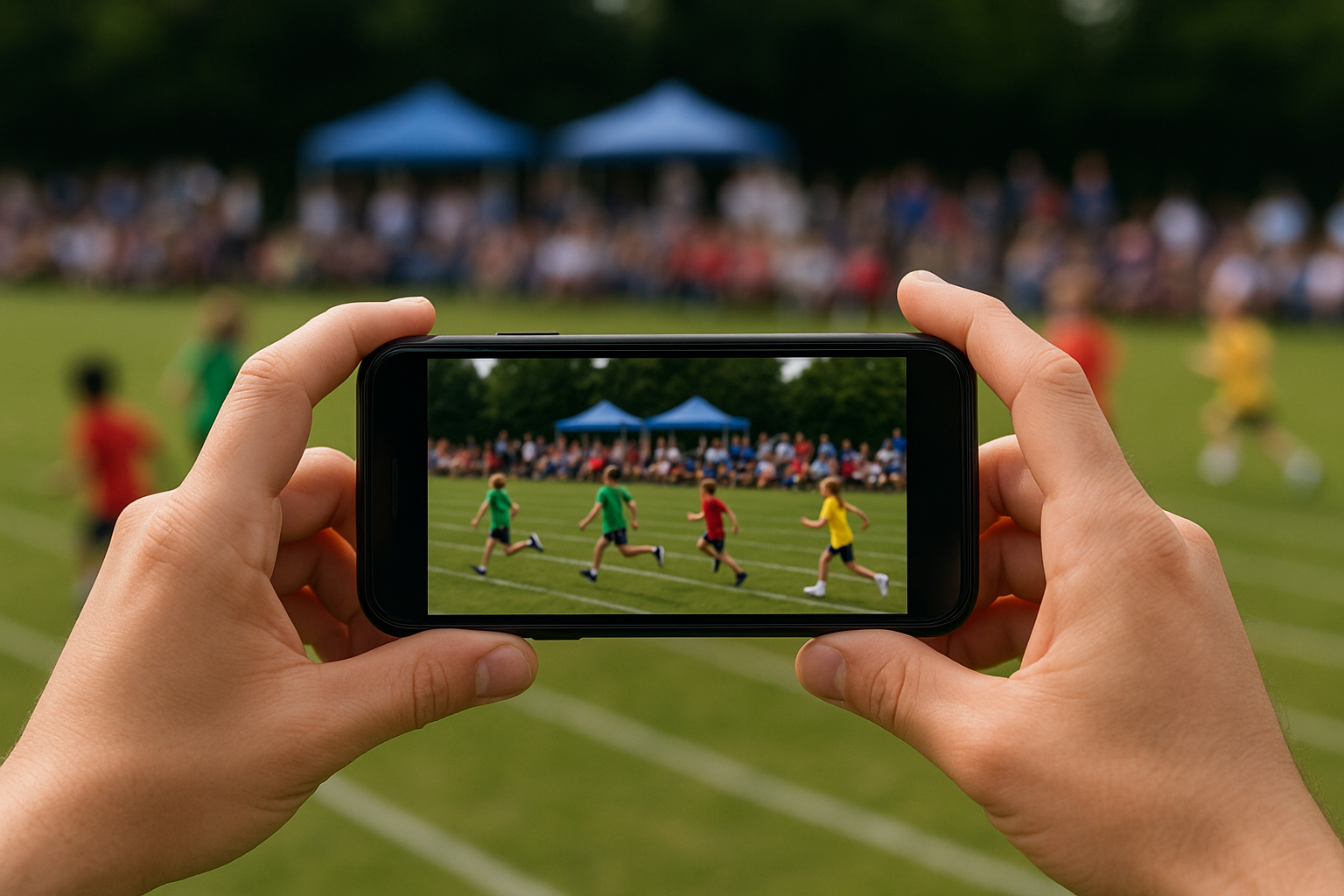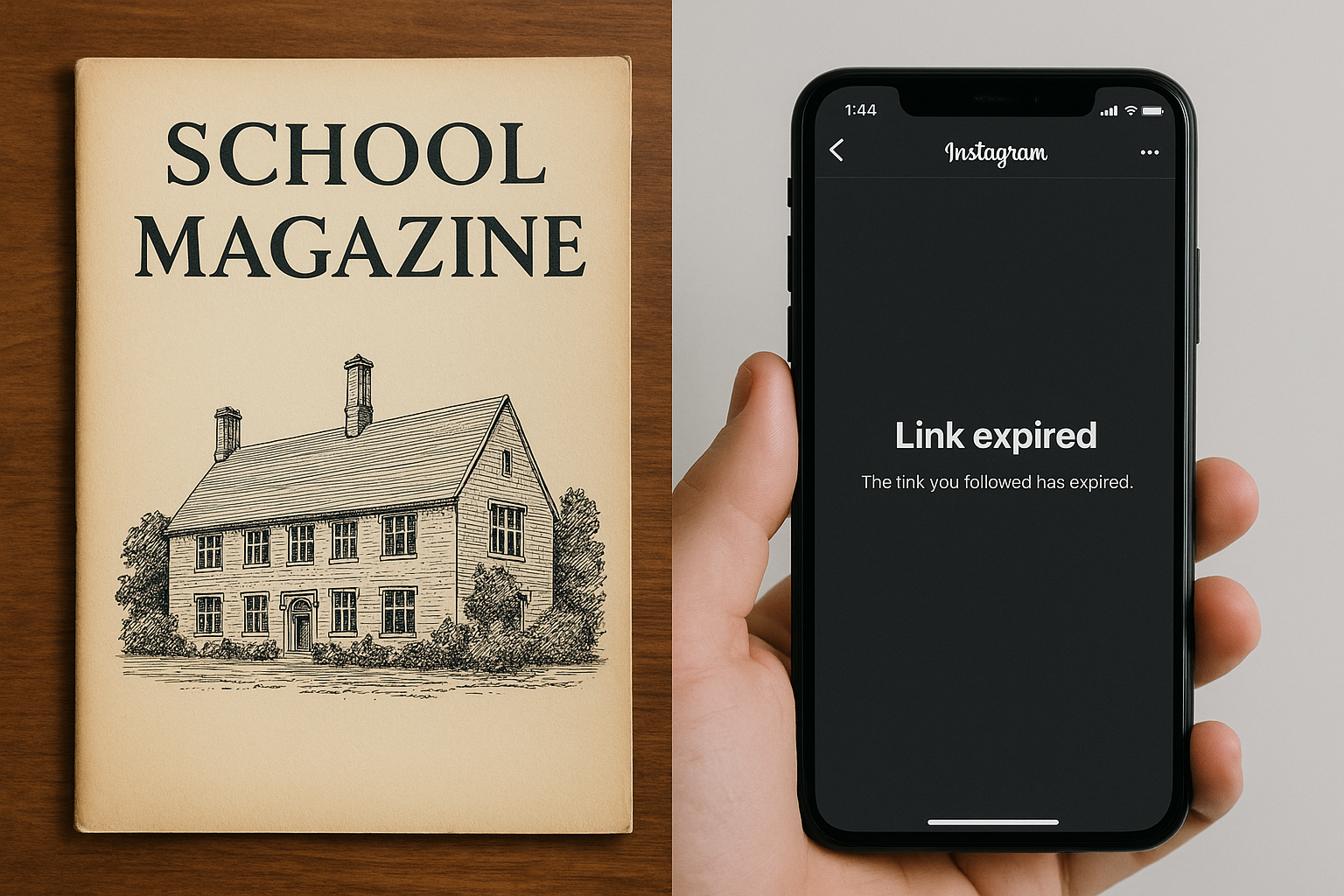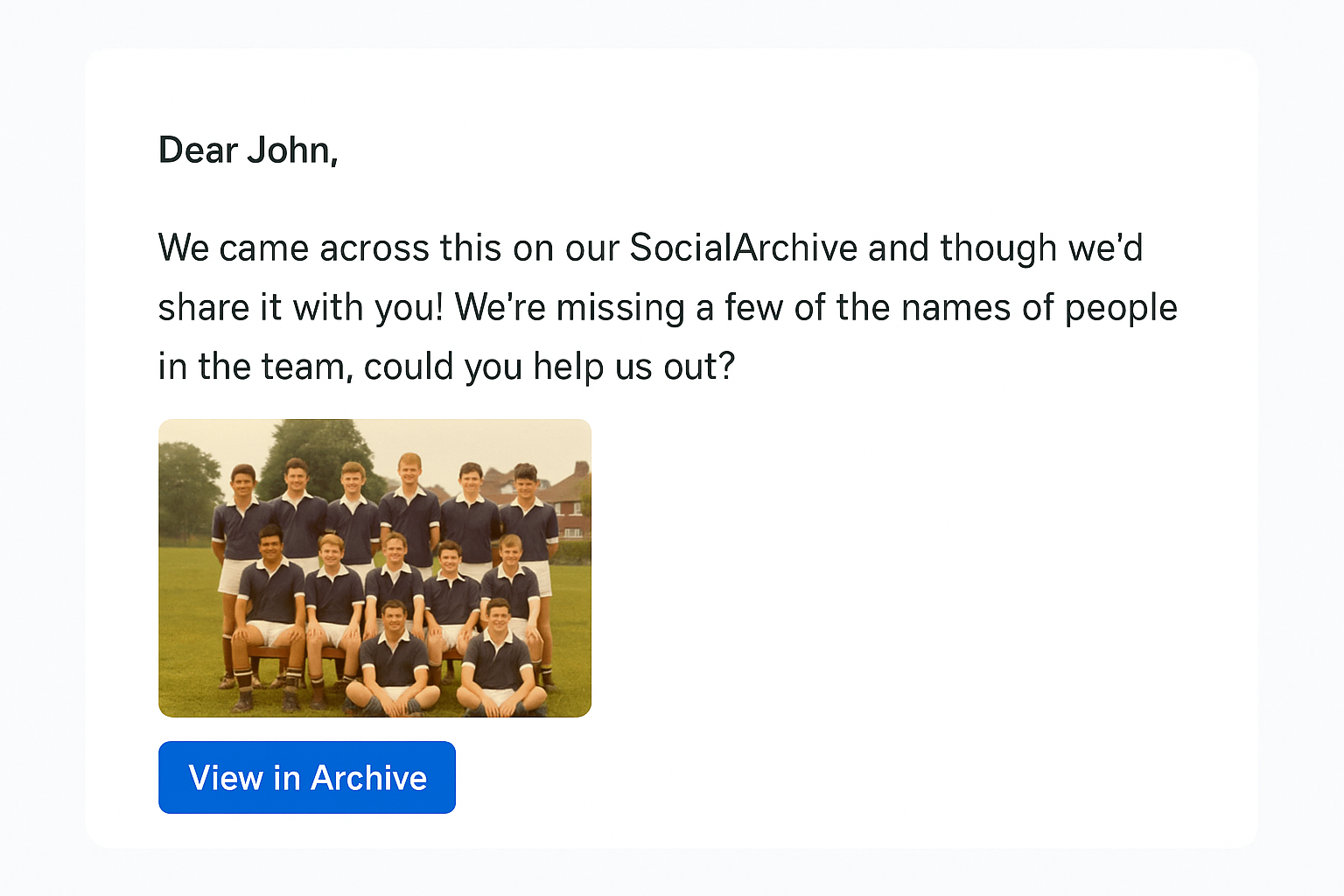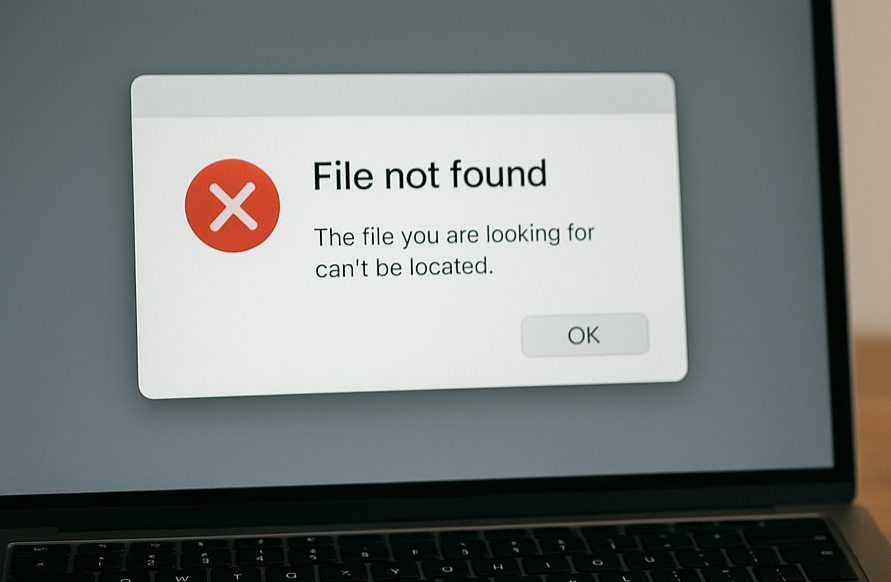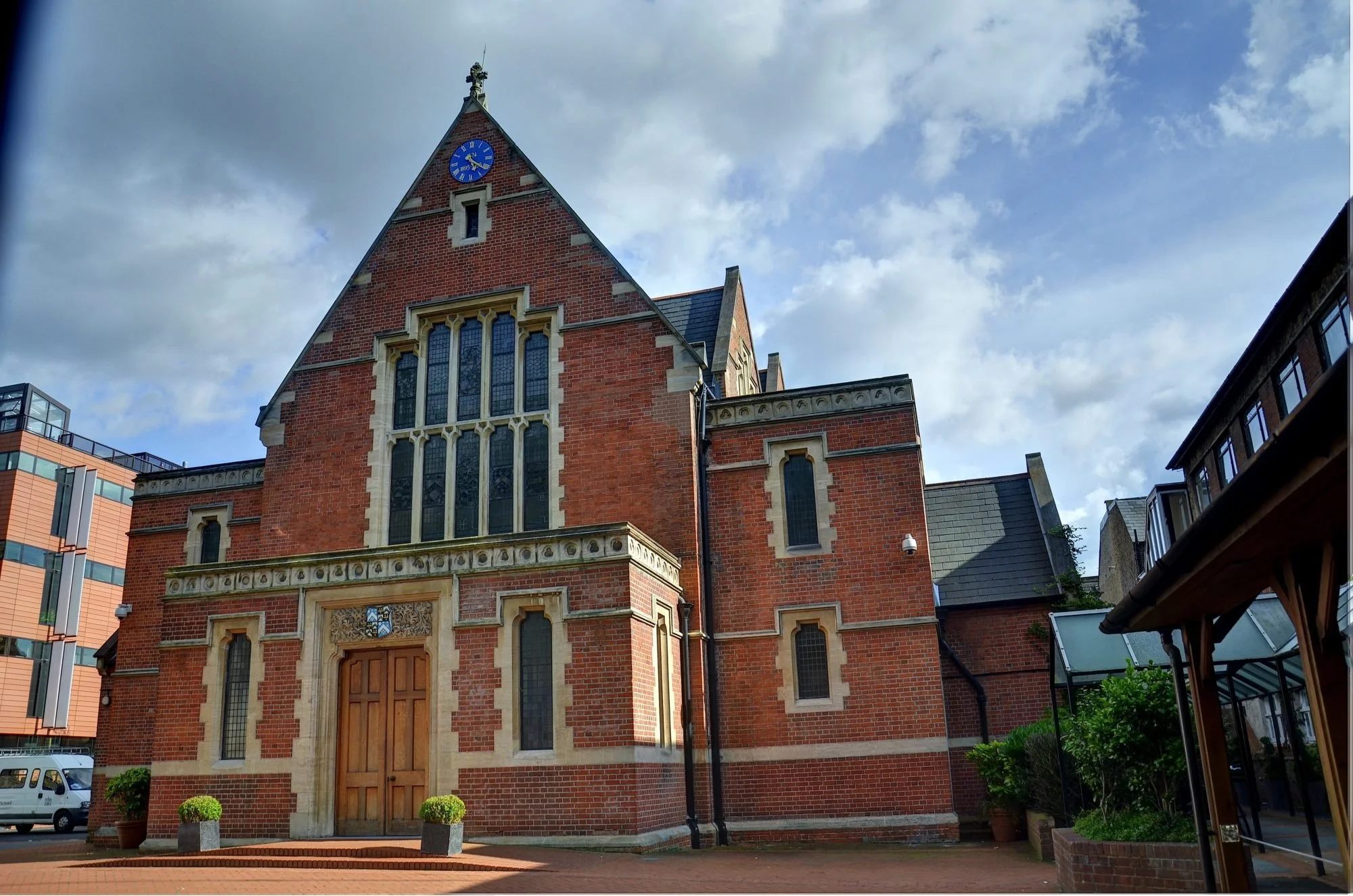The Living Archive: Tomorrow’s History Is Being Written Right Now
Every photo taken at sports day, every alumni story shared on LinkedIn, every video of a school concert… that’s tomorrow’s archive. Yet most of it will be lost.
The paradox is striking. Schools and universities have never produced more content than they do today. Smartphones, social media, digital newsletters, podcasts, and videos mean that every moment of school life is recorded in some form. But the very abundance of this material is also its weakness: it’s scattered across personal devices, hidden in cloud folders, or trapped on platforms that may not exist in ten years’ time.
Institutions often assume that history will somehow “keep itself.” In reality, digital clutter and platform fragility mean that much of today’s school life will vanish before it ever becomes tomorrow’s history.
The question schools and universities need to ask is not only “how do we preserve the past?” but “how do we ensure the present survives into the future?”
That’s where the concept of the living archive comes in.
The Fragility of the Present
Consider the class photos, concert programmes, and alumni magazines of the last century. They were physical, tangible, and often kept in a central collection. Imperfect, yes, but still retrievable decades later.
Now think about the digital equivalent:
Photos saved on staff phones that get upgraded every two years.
A marketing video stored on YouTube, reliant on platform policies that could change overnight.
Alumni stories shared only on LinkedIn, forgotten as the feed moves on.
Event programmes sent as PDFs in an email newsletter, never systematically archived.
The irony is that the 1950s magazine may be easier to retrieve in 2050 than the 2025 Instagram story.
Without intentional curation, today’s content will fragment and disappear, leaving future generations with gaps in their institution’s story.
From Preservation to Proactive Capture
A living archive doesn’t just digitise what already exists. It embeds archival thinking into the present, ensuring that what is created today is curated for tomorrow.
This requires a shift in mindset:
From reactive preservation (“let’s digitise what we can find”) to proactive capture (“let’s store and organise content as it happens”).
From separate silos (marketing, admissions, alumni, archives) to shared responsibility for collecting and curating school life.
From seeing the archive as a backroom project to recognising it as a strategic asset for engagement and growth.
With the right tools, institutions can capture and categorise everything from school magazines to alumni podcasts in real time, making sure it doesn’t just exist, but is easy to find, share, and use.
What a Living Archive Unlocks
1. Authentic Alumni Engagement
Alumni want more than fundraising asks, they want connection. A living archive allows institutions to bring personal, meaningful content into their outreach.
Imagine sending an alum not just a generic email, but one that includes:
A digitised photo of their sports team.
A story about their graduating class.
A video clip of their favourite concert venue, still in use today.
These aren’t abstract gestures; they’re memory triggers that spark pride, nostalgia, and generosity. And because a living archive is continuously updated, alumni can also contribute their own stories, creating a cycle of participation.
2. Ready-Made Content for Marketing, Admissions, and Fundraising
Schools and universities often scramble for material to fuel campaigns: images for a centenary brochure, stories for a fundraising appeal, or quotes for admissions marketing. Without a central system, this becomes a frantic hunt across departments.
A living archive changes that. Because content is captured, tagged, and categorised as it’s created, institutions always have a library of authentic material to draw on:
Photos and videos for social media.
Alumni and parent testimonials for admissions.
Heritage stories for anniversaries.
Instead of reinventing the wheel for every campaign, the archive becomes a content engine powering communications year-round.
3. A Richer, More Diverse Story of Institutional Life
Traditional archives often reflect only what was officially published; the glossy magazines, the formal records, the staged photos. Valuable, yes, but incomplete.
Today’s digital tools allow schools to capture the everyday voices that give a community its richness:
Students recording oral histories.
Alumni submitting career reflections by video or audio.
Parents sharing photos of school plays or sporting achievements.
Teachers documenting changes in curriculum or pedagogy.
By bringing these together, the archive tells a more democratic story, not just the official history, but the lived experience of the whole community.
The Role of Technology
The living archive is not an abstract idea; it’s made possible by technology. Platforms like SocialArchive ensure that:
Content is centralised: No more scattered files across drives, phones, or social platforms.
Search is seamless: With sophisticated tagging and categorisation, OCR for text, and transcription for video, every piece of content is retrievable.
Participation is easy: Alumni and students can contribute stories and memories directly, enriching the archive.
Stories are activated: Built-in tools allow institutions to turn archival material into videos, interactive virtual tours, galleries or personalised campaigns.
The result is not just storage, but activation. The archive becomes alive because it is constantly being used, updated, and shared.
Breaking the Illusion of Permanence
Perhaps the greatest danger schools face is the illusion that because content is digital, it is permanent. In truth, digital material is more fragile than paper ever was.
File formats become obsolete.
Passwords are forgotten, accounts deleted.
Hard drives fail silently.
Without a deliberate strategy, much of today’s school life will never make it into tomorrow’s memory. The living archive is a way of breaking that illusion of permanence and replacing it with genuine continuity.
A Call to Action: Think Forwards, Not Backwards
For too long, archives have been seen as something that looks backwards. In reality, they are the most future-focused tool a school or university has.
They ensure that:
Today’s achievements are tomorrow’s inspiration.
Alumni stay connected across decades and continents.
Fundraising, marketing, and admissions always have authentic material to draw on.
Future students inherit a rich, diverse, and complete story of school life.
The living archive is not just about history, it’s about foresight. It’s about recognising that every story shared today is a tool for tomorrow.
Tomorrow’s history is being written right now, are you capturing it?
Contact us today or book a quick demo to find out how to start building your living archive.
Key Takeaways:
Digital content can disappear quickly without a clear strategy.
A living archive captures and curates stories as they happen.
Archives strengthen alumni connections by making history personal.
Curated content gives marketing, admissions, comms teams, and fundraising a ready-made library.
Technology makes archives searchable, usable, and engaging.
A living archive ensures today’s moments become tomorrow’s history.
FAQs:
What is a living archive?
A living archive is a digital platform that captures, curates, and activates content from the past and present, making it accessible and engaging for alumni, students, staff and wider communities.
How is a living archive different from a traditional archive?
Traditional archives focus on preserving historical materials. A living archive goes further by proactively capturing current content, ensuring it doesn’t get lost, and making it easy to use across multiple departments, for example, marketing, admissions, parent communications etc.
Why is today’s digital content at risk of being lost?
Digital materials are fragile. Photos get stuck on personal devices, file formats become obsolete, and accounts are deleted. Without a deliberate system, much of today’s school life may vanish.
How does a living archive help alumni engagement?
It allows schools to send alumni personalised, memory-rich content, like class photos or event stories, that spark pride and connection. Alumni can also contribute their own memories, making the archive a shared community resource.
What role does technology play in a living archive?
Technology enables storage, tagging, and search. Features like OCR, video transcription, and facial recognition make archives easy to navigate, while storytelling tools allow schools to turn content into campaigns, exhibitions, or digital experiences.
How can SocialArchive help?
SocialArchive provides schools and universities with a complete platform for building living archives; capturing, organising, and activating content to create an ever-evolving cycle of stories, engagement, and connection across past, present, and future.

